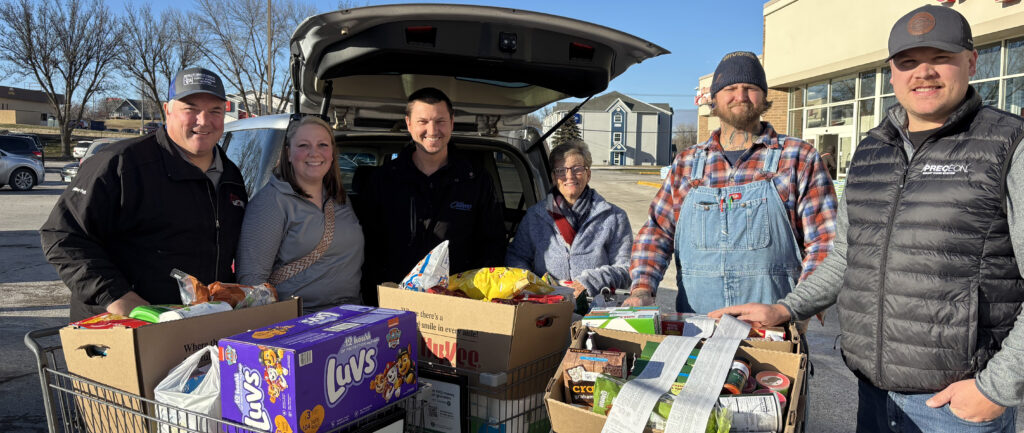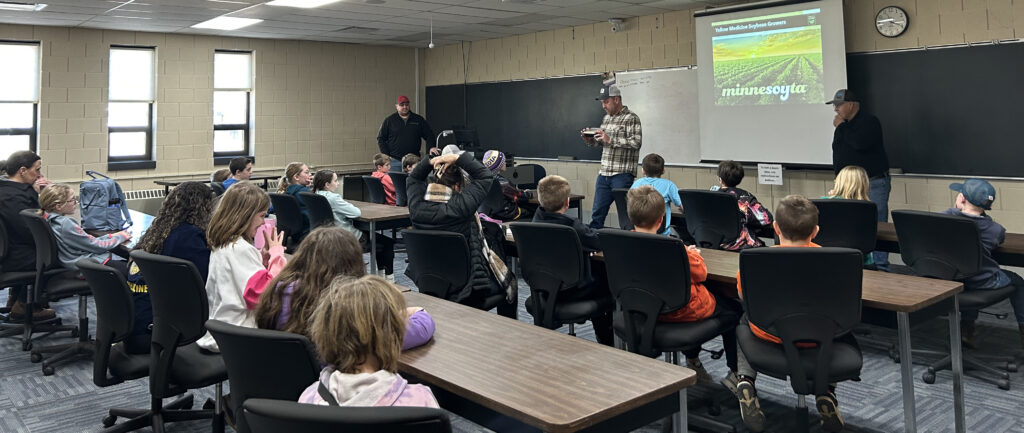As international relations remain a focal point of discussion in the soybean industry, more than 800 attendees from 52 countries united in Chicago for the U.S SOY Global Trade Exchange & Specialty Grains Conference (GTE) on Aug. 20-22. Co-hosted by the U.S. Soybean Export Council (USSEC) and Specialty Soya and Grains Alliance (SSGA), soy and grain industry leaders, buyers and suppliers gathered in Chicago to network and share ideas on how to move the industry forward.
“The networking and connections we are able to make at this conference is invaluable,” says Patrick O’Leary, chair of the promotion action team and director with the Minnesota Soybean Research & Promotion Council (MSR&PC). “Being able to bring everyone together in one place is a great way for Minnesota farmers to share our message.”
Alongside more than 50 trade show exhibitors, MSR&PC touted the high quality of Minnesota’s soybeans.
“Minnesota has less than one percent foreign material levels in our soybeans,” says Dover, Minn., farmer Ben Storm, who represents district 9 on the MSR&PC board. “We are proud of our clean soybeans, which ultimately leads to a better-quality meal once it is crushed for human or livestock consumption.”
International buyers were interested to put a face to a name on their soybean imports.
“We import 2.1 million tons of soybean meal and provide protein to over 400 million people,” says Made Astawan, an Indonesian soybean buyer. “We buy Minnesota soybeans out of the Pacific Northwest whenever we can.”
Overseas buyers were also interested in current planting conditions and projected prices for this harvest season.
“We are short on heat units and had a very cold spring. We still have about 25 percent of our 2018 soybean crop in the bin. Depending on prices, we might just put them in a bin this year again and leave them until prices rebound.” Storm says. “If we can sell more corn off the combine and wait for a better price for beans, we will. Whether that’s the right call or not, ask me in a year.”
The final day of GTE brought a wealth of knowledge during a full list of high-profile speakers. Learning and breakout sessions ranged in topics from trade, African Swine Fever (AFS), transportation, shipping and more.
Like many famers, Dan Basse, president of AgResource, had his concerns about the recent USDA report.
“With the millions of prevent plant acres reported, I was disappointed that the market didn’t react to these number like it should have. But, we also have to remember that there is no shortage of soybeans in the world,” Basse said. “The American farmer may not like his crop this year, but the world supply is there. Our eyes are now focused on South America to see how their crop turns out.”
To no surprise, many of the breakout sessions hit on trade, but according to Dr. Mary Lovely, Peterson Institute of International Economics Professor at Syracuse University, the current political climate has made it even more difficult to resolve.
“Traditionally, the United States has led the way in trying to make these trade agreements happen and maintain these open markets. We have taken our market access for granted,” Lovely said. “Policy has changed in all of those dimensions. There are large stakes at play and we need to focus on a positive outcome. If we get some decent policy, there is no reason why this trade expansion shouldn’t be robust.”
But with the recent spread of AFS into more Asian countries and into the European Union, soybean exports will be impacted even more.
“China has already lost a minimum of 25 percent of the world hog supply and it’s marching west through the European Union,” says Richard Fritz, founder of Global AgriTrends. “AFS is hard to control and hard to kill. The current Chinese hog market is at record levels and food inflation may reach double digits. The feed industry has an important role in education of AFS.”
EAA message reaches international buyers
Even with the potential impact of AFS, University of Minnesota Professor, Dr. Samuel Baidoo, shared his knowledge on essential amino acids (EAA) and how soybeans in the Midwest can meet nutritional needs.
“When it comes to feed, protein is not important, it’s the amino acids,” Baidoo said. “They (Midwestern soybeans) provide all of the important elements. Luckily, Midwestern soybeans have high levels of these amino acids, meaning less is being wasted because of the higher nutritional benefit.”
The EAA message has been a focus area MSR&PC, along with the North Dakota Soybean Council and the South Dakota Soybean Research & Promotion Council.
“We are able to take this knowledge back and share with our customers,” says Umakantha, Asia subcontinent consultant for USSEC. “With Minnesota’s low foreign material levels and higher EAA value, this is something to share.”
O’Leary, who just completed two terms as MSR&PC chair, says that after this conference, there is still work to be done.
“We made these connections and now it is time to follow-up,” O’Leary says. “This conference is a great starting point, but what we do after is just as important as we try to increase the demand for our beans. Our work is just beginning.”







